Botanical Names
Zingiber officinale var. rubrum
Common Names
| Malaysia | Halia udang, halia merah |
| Indonesia | Jahe merah |
Family
Zingiberaceae
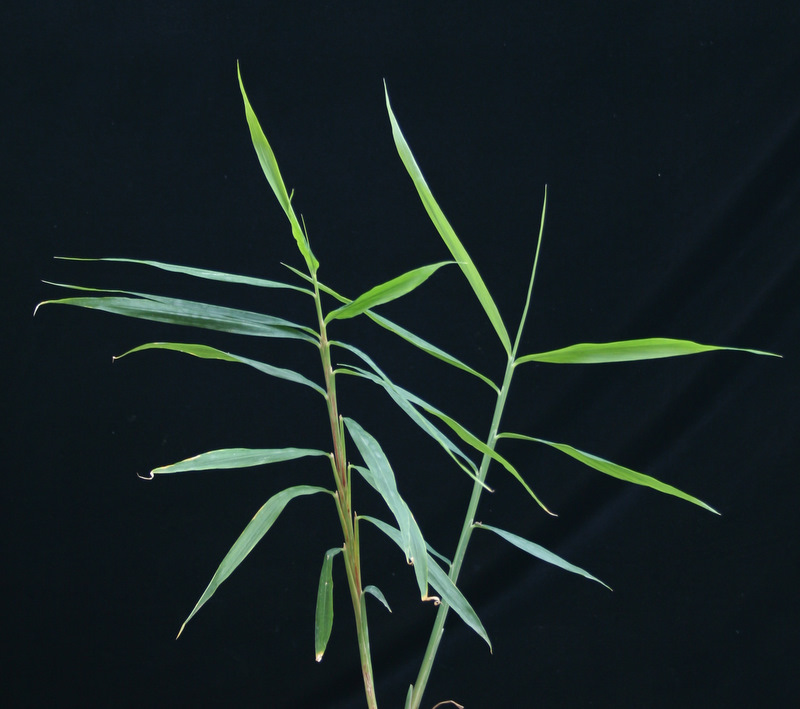
Introduction
‘Halia bara’ (Zingiber officinale Vara rubrum) originates from South East Asian countries. However, it is now widely found through out Asia. The mature rhizomes are used as the flavouring agent in cooking and medicinal preparations. The rhizomes are also used for the extraction of essential oil and oleoresin. In Malaysia it is planted on small-scale basis and used in the preparation of herbal tonic.
Morphological Features
The growth habit of halia bara is almost similiar to that of common halia. However the plants are much smaller and normally grow only to about 30-60 cm in height. The leaves are green in colour and narrow (measuring about 5 cm wide and 30 cm long). The flowers are yellowish red. The rhizome is bright red in colour, branched and arranged laterally under the soil surface.[1][2]
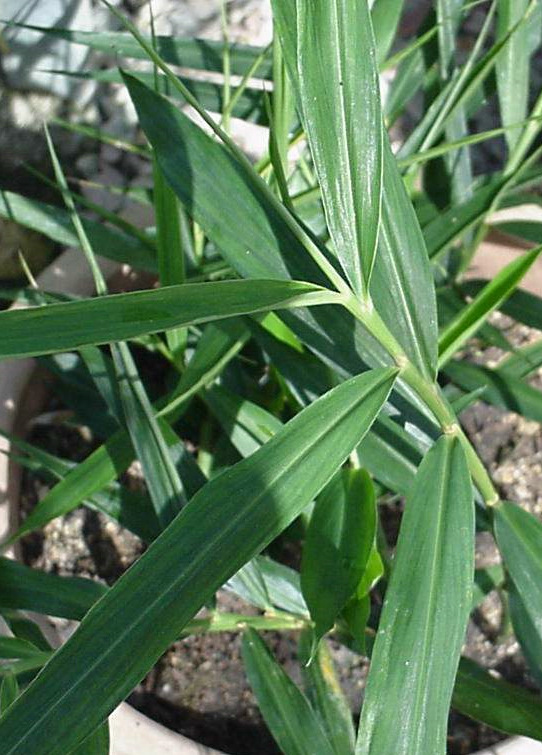
Medicinal Properties and Usage
In Malaysia the plant is widely used in the production of herbal medicine and health food. It is normally for the treatments of gastric, fever, indigestion, fungal and bacterial infections, men’s sexual problems and inflammations. The decoctions are also used as the afterbirth treatments. It is normally taken as tonic drink or in the form of dried halia or extracts.[1]
Soil Suitability and Climatic Requirement
‘Halia bara’ is well adapted to tropical climates and found growing all over Malaysia. The total annual rainfall for optimum growth is 1,000 to 2000 mm. Supplementary irrigation is however required during drier months. The plant can grows on many different soil types but it is suited for well-drained sandy loam with high organic matter content.
Field Preparation
Land Preparation
Good land preparation is important in the successful production of halia bara. The soil should be plough at least twice by using the disc plough followed with roto-ridger. GML has to be incorporated into the soil at least 4 weeks before field planting. Bed is prepared after soil preparation especially for soil with poor drainage. The bed is normally 60-100 cm wide and 25-30 cm high. The distance between each bed is 30-50 cm.[1]
Production of Planting Materials
‘Halia bara’ is propagated by using matured rhizomes. Matured rhizomes are dark red in colour. The rhizomes are cut into about 5 cm segments with 2-3 growing buds per cutting segments. For maximum germination, these cuttings are kept under moist conditions for a few days until the cuttings starts to sprout. The planting materials should be soaked in fungicide solutions and dried before field planting. About 1,500 kg of planting material is required for a hectare of field planting.[1]
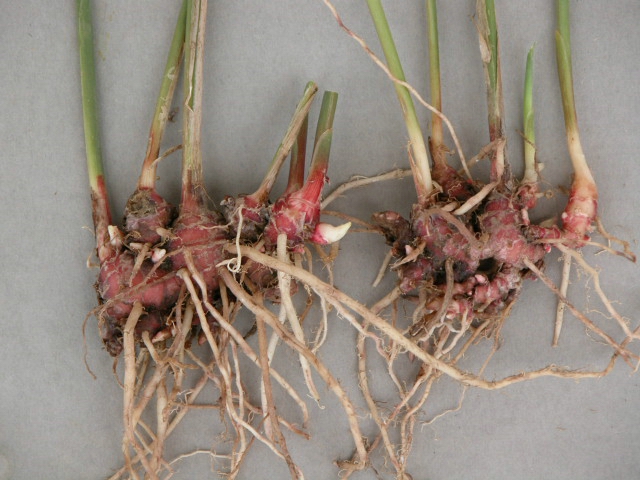
Field Planting
Planting should be done at the onset of raining seasons. This will minimises the effect of transplanting stress. The recommended planting distance for halia bara is 60 cm x 75 cm. This will give the population density of about 22,000 plants/ha. At this planting density, about 1.5 t/ha of planting materials is required. The sprouted rhizomes are sown about 8 cm deep with the growing buds upright. Mulching using dried coconut leaves or rice straw should be done 2-4 weeks after planting when newly developed leaves just appear. This is done to avoid leaf scorching, which could lead to leaf spot disease.[1]
Field Maintenance
Fertilisation
For optimum crops growth, both the organic and inorganic fertilizers are required. For the mineral soils, the organic fertilizer (chicken dung) is applied at the rate of 5-8 t/ha. This should be given as basal dressing at about 1 week before planting. The inorganic compound fertiliser NPK (12:12:17:2+TE) at the rate of 1.5 t/ha is split into 5 equal portions and applied at 5, 10, 14, 16 and 20 weeks after planting. Higher rates of both the organic and inorganic fertiliser is required for sandy soils like bris or tin tailings.[1]
Weed Control
Weed control is done once in 2-3 months. Each weeding cycle is normally done together with hilling. Hilling is actually raising up the soil at the plant base to cover the rhizome from being exposed to sunlight and to encourage growth. Mulching using rice straw or dried coconut leaves helps to control weeds, avoids bed slacken off, controls nutrient loss and maintains soil moisture.[1]
Water Management
For optimum crop growth, supplementary irrigation is needed especially during the dry season. Sprinkler irrigation system is recommended.[1]
Pest and Disease Control
Stem borer (Udapes falus) and armyworms (Spodoptera litura ) are the main insect pests of halia bara. The borer makes holes in the stem and subsequently leaves will turn yellowish and dried. Bacterial wilt is the major disease that could lead to great loss in halia bara production. The disease is caused by Pseudomonas solanacearum. The symptom is the yellowing of lower leaves and spreads to the upper leaves. The leaves subsequently become brown, wet, soft and easily detached from the stem. Planting using treated planting materials and alternating the area with other crops and practicing good sanitary practices can reduce this disease problem.[1]
Harvesting
‘Halia bara’ reaches its full maturity at 8-9 months after planting. Maturity can be determined when the leaves starts to dry up. The crop is harvested manually using a hoe. The rhizome is cut from the stem. The potential fresh yield of matured halia bara is about 17 t/ha.[1]
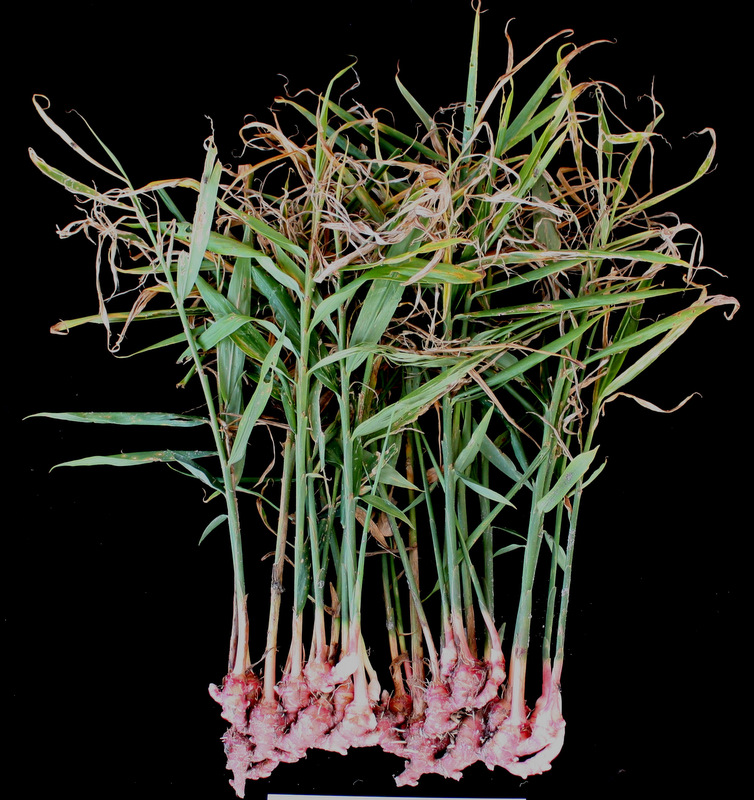
Postharvest Handling
The rhizomes have to be cleaned from soil and dried leaves by washing under running water. Care should be taken not to avoid bruising since this will lead to reduction in its quality. Keeping the rhizomes at the room temperature for about 4-5 days under shade helps the formation of the protection layer outside the rhizomes. This will ensures that the rhizomes can be stored better.[1]
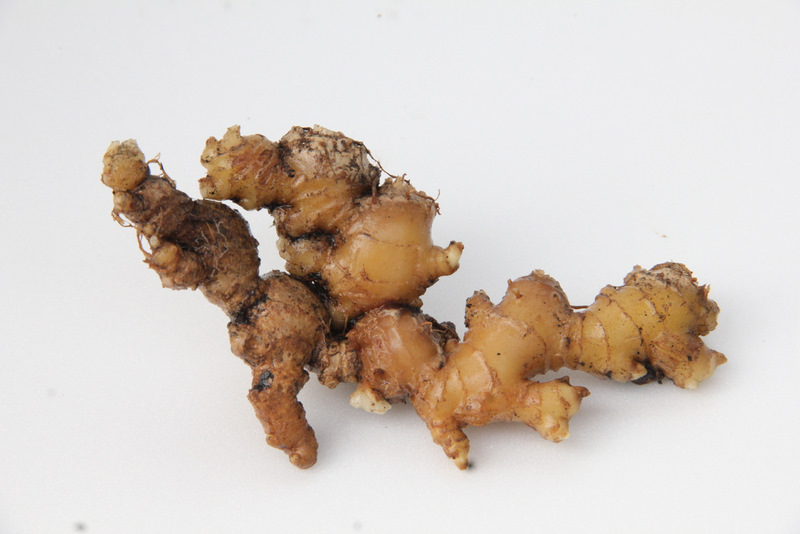
Estimated Cost Of Production
The production cost per hectare for land preparation, input and labour is about RM34,000. The production cost per kilogramme depends on the yield per hectare. Thus, the production cost for a 17 t/ha of fresh rhizomes is about RM2.00/kg. The production cost was estimated based on the cost of current inputs during writing of this article.[1]
Read More
References
- Anon (2010). Panduan Penanaman Halia Bara. Kuala Lumpur : Jabatan Pertanian Semenanjung Malaysia
- Musa, Y. Azimah, K. and Zaharah, H. 2009. Tumbuhan Ubatan Popular Malaysia. Serdang : MARDI


